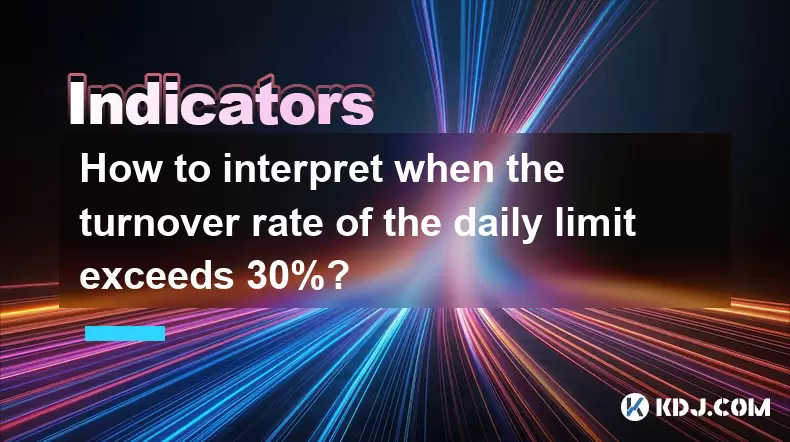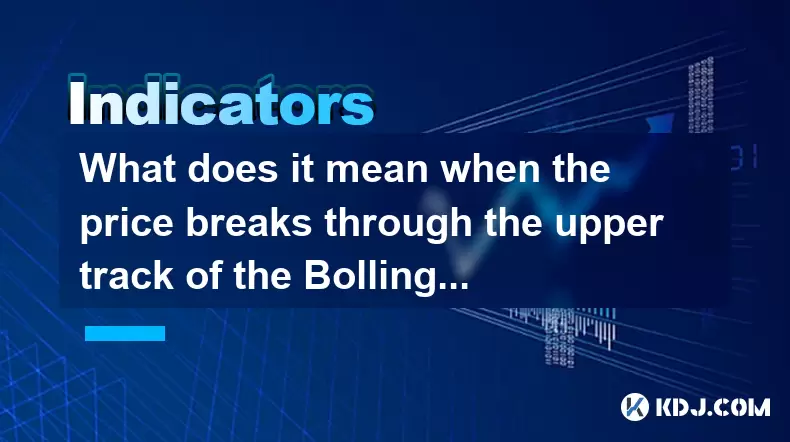-
 Bitcoin
Bitcoin $117500
-0.66% -
 Ethereum
Ethereum $3760
-1.24% -
 XRP
XRP $3.087
-2.54% -
 Tether USDt
Tether USDt $0.9999
-0.01% -
 BNB
BNB $803.6
-4.03% -
 Solana
Solana $180.3
-4.15% -
 USDC
USDC $0.9998
-0.01% -
 Dogecoin
Dogecoin $0.2218
-4.92% -
 TRON
TRON $0.3366
3.71% -
 Cardano
Cardano $0.7785
-3.73% -
 Hyperliquid
Hyperliquid $42.90
-4.75% -
 Sui
Sui $3.797
-7.45% -
 Stellar
Stellar $0.4165
-2.32% -
 Chainlink
Chainlink $17.65
-4.17% -
 Bitcoin Cash
Bitcoin Cash $561.0
-3.86% -
 Hedera
Hedera $0.2611
-4.54% -
 Avalanche
Avalanche $24.33
-7.02% -
 UNUS SED LEO
UNUS SED LEO $8.972
0.06% -
 Litecoin
Litecoin $107.6
-2.79% -
 Toncoin
Toncoin $3.254
-1.84% -
 Shiba Inu
Shiba Inu $0.00001306
-4.69% -
 Ethena USDe
Ethena USDe $1.001
0.00% -
 Uniswap
Uniswap $10.10
-4.83% -
 Polkadot
Polkadot $3.902
-4.63% -
 Monero
Monero $315.1
-2.57% -
 Dai
Dai $1.000
0.02% -
 Bitget Token
Bitget Token $4.499
-2.53% -
 Pepe
Pepe $0.00001145
-7.38% -
 Cronos
Cronos $0.1479
6.07% -
 Aave
Aave $281.3
-4.07%
How to interpret when the turnover rate of the daily limit exceeds 30%?
A 30%+ daily turnover rate in crypto signals intense trading activity, often driven by volatility, news, or institutional moves, warranting further analysis to gauge market sentiment or potential manipulation.
Jun 18, 2025 at 09:00 pm

Understanding the Concept of Turnover Rate in Cryptocurrency
In cryptocurrency trading, the turnover rate refers to the percentage of a particular asset's total circulating supply that has been traded over a specific period. This metric is crucial for assessing liquidity, market activity, and investor sentiment. When the turnover rate exceeds 30% within a single day, it signals unusual or heightened trading activity. Such spikes can be attributed to various factors including price volatility, breaking news, regulatory changes, or major exchange listings.
High turnover rates are often seen as indicators of strong market interest or potential manipulation depending on the context.
What Does It Mean When Daily Turnover Exceeds 30%?
A turnover rate surpassing 30% indicates that more than a third of the total available tokens or coins have changed hands in a 24-hour window. This level of movement suggests significant participation from traders and investors. In many cases, this could mean that the market is reacting strongly to recent developments related to the project or token in question.
- Sudden price surges or drops may trigger panic buying or selling.
- New partnerships or technological upgrades announced by the team can lead to increased trading volume.
- Regulatory announcements from governments or financial institutions can cause large-scale exits or entries.
It’s important to cross-reference this data with other metrics like order book depth and open interest to get a clearer picture.
How to Analyze the Impact of High Turnover Rates
Analyzing high turnover involves examining several layers of data beyond just volume figures. Traders should look at:
- Price correlation — Is the surge in turnover aligned with a sharp price movement?
- Exchange distribution — Is the activity concentrated on one or two exchanges, or is it widespread?
- On-chain analytics — Tools like Etherscan or blockchain explorers can reveal if whales are moving large amounts of tokens.
By combining these insights, you can better determine whether the spike in turnover is due to organic growth, speculative frenzy, or coordinated market manipulation.
Steps to Monitor and Interpret High Turnover Events
Monitoring turnover events requires real-time tracking tools and analytical frameworks. Here’s how you can approach it step-by-step:
- Use reliable tracking platforms such as CoinGecko, CoinMarketCap, or CryptoCompare to monitor turnover rates across different assets.
- Set up alerts on your preferred crypto tracking apps to receive notifications when turnover exceeds predefined thresholds.
- Cross-check with social media and news outlets to identify any external catalysts driving the trading activity.
- Review wallet movements using on-chain analysis tools to detect if large holders are accumulating or distributing the asset.
These steps help ensure that you’re not only reactive but also proactive in understanding market dynamics.
How Institutional Activity Influences Turnover Surges
Institutional players often contribute significantly to sudden increases in turnover. Their involvement can be identified through:
- Large block trades recorded on decentralized exchanges (DEXs) or centralized order books.
- Futures and options open interest increasing rapidly, indicating hedging or leveraged positions.
- Grayscale or ETF inflows/outflows showing institutional accumulation or liquidation trends.
When institutional entities begin to trade aggressively, retail traders must assess whether they are riding a wave of smart money or being caught in a trap set by larger players.
Frequently Asked Questions
Q1: Can a high turnover rate indicate a pump-and-dump scheme?
Yes, especially if the turnover spike is accompanied by rapid price inflation followed by a steep decline, and if there's little to no fundamental news supporting the move.
Q2: Should I buy when turnover exceeds 30%?
Not necessarily. High turnover can reflect both positive and negative sentiment. Always analyze alongside other technical and on-chain indicators before making decisions.
Q3: How does turnover differ from trading volume?
Turnover measures the percentage of the total supply traded, while trading volume represents the dollar or fiat value of assets exchanged. Turnover provides a relative measure based on supply.
Q4: Is high turnover always a sign of strength?
No. While high turnover can suggest strong market interest, it can also signal panic selling, capitulation, or wash trading aimed at manipulating volume metrics.
Disclaimer:info@kdj.com
The information provided is not trading advice. kdj.com does not assume any responsibility for any investments made based on the information provided in this article. Cryptocurrencies are highly volatile and it is highly recommended that you invest with caution after thorough research!
If you believe that the content used on this website infringes your copyright, please contact us immediately (info@kdj.com) and we will delete it promptly.
- Whale Activity, Altcoins, and Market Cooldown: What's the Deal?
- 2025-07-30 04:50:13
- Crypto Presale Buzz: Experts Eye Binance Coin's Staying Power and New Contenders
- 2025-07-30 04:50:13
- BlockDAG Builders Surge Past 4,500 Amidst Presale Hype
- 2025-07-30 05:30:13
- BlockDAG's Run Outpaces Meme Buzz: Little Pepe's Fading Frog
- 2025-07-30 05:30:13
- Ruvi AI: Analyst Favorite and Token Gainer Poised for Massive ROI?
- 2025-07-30 05:35:12
- Algorand, Remittix, and Gains: What's Hot in the Crypto Space?
- 2025-07-30 05:35:12
Related knowledge

What does it mean when the EMA combination crosses upward for the first time after sideways trading?
Jul 28,2025 at 03:43pm
Understanding the EMA and Its Role in Technical AnalysisThe Exponential Moving Average (EMA) is a widely used technical indicator in cryptocurrency tr...

What does it mean when the price breaks through the upper track of the Bollinger Band but the RSI is overbought?
Jul 30,2025 at 03:35am
Understanding Bollinger Bands and Their Upper TrackBollinger Bands are a widely used technical analysis tool developed by John Bollinger. They consist...

What signal does the ROC send when it rises rapidly from a low level and breaks through the zero axis?
Jul 27,2025 at 10:15am
Understanding the Rate of Change (ROC) IndicatorThe Rate of Change (ROC) is a momentum-based oscillator used in technical analysis to measure the perc...

What does it mean when the moving averages are glued together and a gap appears?
Jul 29,2025 at 07:49pm
Understanding Moving Averages in Cryptocurrency TradingMoving averages are among the most widely used technical indicators in the cryptocurrency tradi...

What does it mean when TEMA breaks through the long-term downward trend line?
Jul 29,2025 at 02:50pm
Understanding the Role of Smart Contracts in Decentralized Finance (DeFi)Smart contracts are self-executing agreements with the terms of the agreement...

What does it mean when the price breaks through the double bottom neckline and the moving averages are arranged in a bullish pattern?
Jul 28,2025 at 10:57am
Understanding the Double Bottom PatternThe double bottom is a widely recognized reversal chart pattern in technical analysis, particularly within the ...

What does it mean when the EMA combination crosses upward for the first time after sideways trading?
Jul 28,2025 at 03:43pm
Understanding the EMA and Its Role in Technical AnalysisThe Exponential Moving Average (EMA) is a widely used technical indicator in cryptocurrency tr...

What does it mean when the price breaks through the upper track of the Bollinger Band but the RSI is overbought?
Jul 30,2025 at 03:35am
Understanding Bollinger Bands and Their Upper TrackBollinger Bands are a widely used technical analysis tool developed by John Bollinger. They consist...

What signal does the ROC send when it rises rapidly from a low level and breaks through the zero axis?
Jul 27,2025 at 10:15am
Understanding the Rate of Change (ROC) IndicatorThe Rate of Change (ROC) is a momentum-based oscillator used in technical analysis to measure the perc...

What does it mean when the moving averages are glued together and a gap appears?
Jul 29,2025 at 07:49pm
Understanding Moving Averages in Cryptocurrency TradingMoving averages are among the most widely used technical indicators in the cryptocurrency tradi...

What does it mean when TEMA breaks through the long-term downward trend line?
Jul 29,2025 at 02:50pm
Understanding the Role of Smart Contracts in Decentralized Finance (DeFi)Smart contracts are self-executing agreements with the terms of the agreement...

What does it mean when the price breaks through the double bottom neckline and the moving averages are arranged in a bullish pattern?
Jul 28,2025 at 10:57am
Understanding the Double Bottom PatternThe double bottom is a widely recognized reversal chart pattern in technical analysis, particularly within the ...
See all articles

























































































